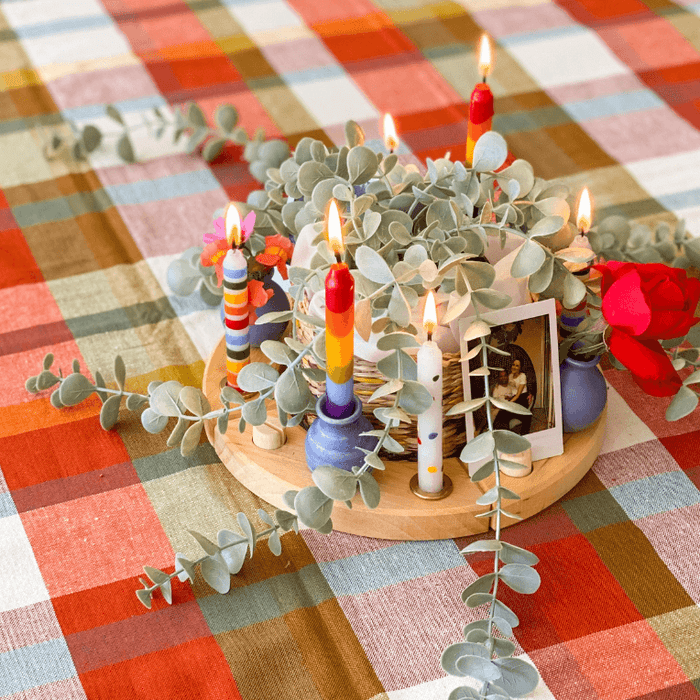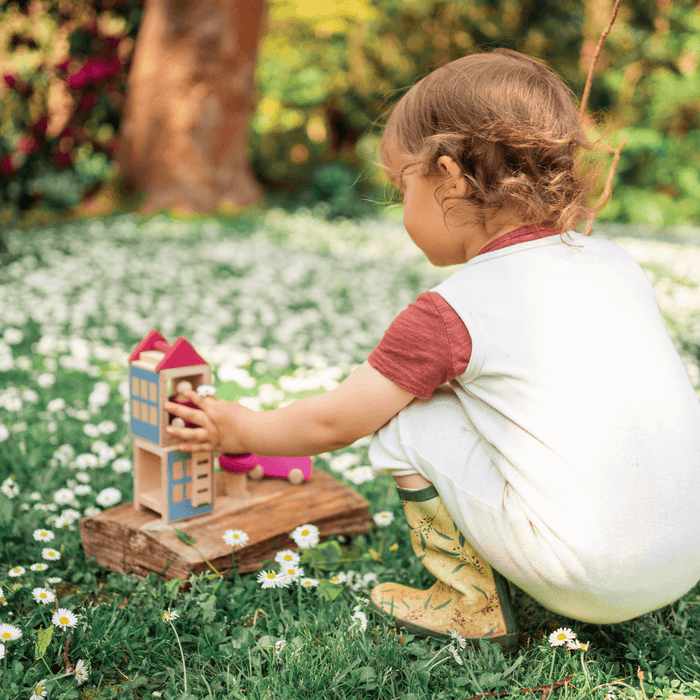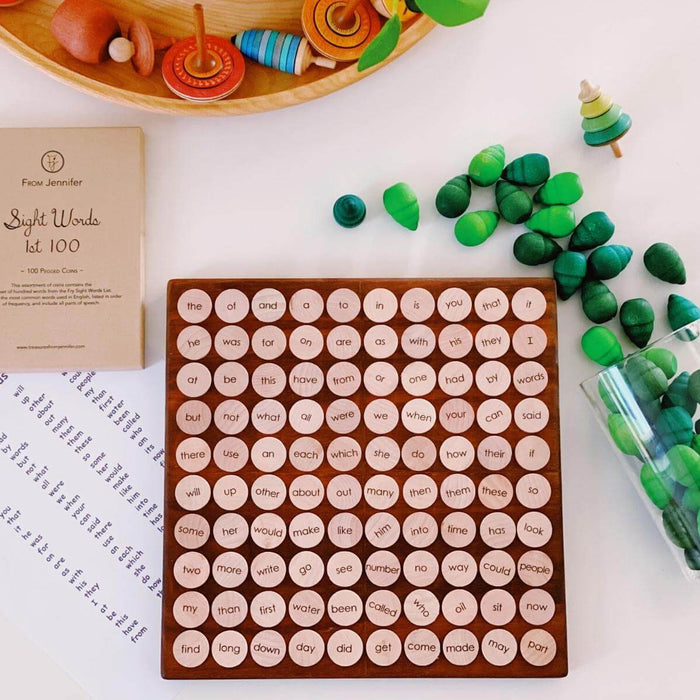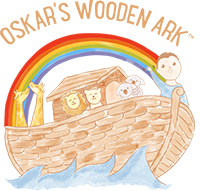

SumBlox - Making learning fun
SumBlox are one of the best open-ended learning tools to visualise the concept of numbers. David B. Skaggs, the SumBlox inventor, created SumBlox when he realised that not all children are into maths games and some have trouble understanding and envisioning numbers. David came up with this new maths idea and turned the concept of maths into a stacking game. Young children have a short attention span and getting them to sit down for long periods of time is hard and against their natural behaviour. Engaging children in playful learning activities is much easier and takes the stress away for parents, educators and children. SumBlox helps children learn through play by supporting children’s natural desire to explore and understand on their own terms.
The idea behind SumBlox is not only genius but also very basic which makes the concept and meaning of numbers easy to understand: the higher the number, the taller the block! No matter how you stack the blocks, if the numbers add up the heights of the stacks will match. This doesn’t only work for addition and subtraction but also for multiplication and fractions. If you're interested in seeing SumBlox in action, check out our SumBlox video.
Learning activities for children of different ages
SumBlox are made from solid, hardwood beech and the chunky number blocks are easy to handle for big as well as little hands. SumBlox not only look beautiful, they are also incredibly tactile allowing children to explore the look and feel of wood. SumBlox can be played with in many ways, foster many skills sets and can be used for learning activities even before a child understands the concept of numbers and their value.
Toddlers:
You may have noticed that each child develops at a different speed, has different interests and also comprehends certain concepts at a different age compared to their peers. Knowing the name of a number, recognising a numeral and being able to count and knowing what “value” means in terms of the number of pieces, requires the connection of three different developmental milestones. Even if your child hasn’t made this connection yet, it probably knows other concepts, eg. the difference between big and small, which you can make use of in the lead up to understanding value.
By playing with SumBlox your children will get familiar with the shapes of the different numerals and if you continue to name the numerals and SumBlox blocks by their name (eg. “This is number two.”), they will soon associate the shape with the name of the number which is a great starting point.
Here are a few activities that you can do with smaller children using SumBlox:
- Sorting according to size/height
- Comparing SumBlox, which one is bigger? Which one the smallest?
- Matching and stacking two of the same Sumblox numbers
- Create a number line according to size
- Create multiple stacks of two different SumBlox blocks all with the same height
- On a piece of paper trace around the SumBlox block with a pencil and create a fun number matching activity
📸 by Steph @steph.soj
Preschoolers:
By the time children are 4 years old, most of them know numbers 1 - 10 and can recognise and identify numerals by their shape and know the value of them. Sometimes children leave a number out during counting and you can help them remember by creating invitations to count. As with most concepts, practice and repetition help you learn until it becomes second nature. SumBlox make it easy to practise counting and children can correct themselves by checking the height of the number blocks. SumBlox can easily be paired with other toys to set up fun counting activities. Combine your SumBlox with loose parts to practise cardinality and counting. Preschoolers might still enjoy some of the toddler activities described above but here are a few more challenging activity ideas:
- Create little batches of different amounts of loose parts and ask your child to count them and then find the corresponding SumBlox number block. You can also reverse this activity by providing your child with a SumBlox number block and ask them to add the correct amount of loose parts next to it.
- Number lines of the same numbers, increasing or decreasing numbers.
- Number matching: write numbers 1 -10 on a piece of paper and put them in a bag. Ask your child to match the numbers on the piece of paper with the according SumBlox block.
- Line up SumBlox blocks 1-10 in row and take away one number. Ask your child which number is missing. If they have trouble, ask them to count while pointing at the number blocks.
- Put SumBlox blocks into a bag and get your child to feel the blocks and guess which number they have in their hands. This is tricky but also a fun sensory activity. Start with just a couple of numbers and work your way up.
📸 by Steph @steph.soj
Primary school children:
SumBlox are fantastic for visualising the basic concepts of maths like addition, subtraction, multiplication and division and you can use SumBlox to help your children understand the concepts in a playful, hands-on way.
- Addition: Take a SumBlox block and ask your child to recreate the height of it by making a stack of smaller numbers, eg the height of number 4 can be build by using four number 1 blocks, two number 2 blocks, one number 1 and one number 3, therefore 1+1+1+1=4, 2+2=4 and 3+1=4.
- Subtraction: You can use the stacks above in reverse. Take one no 1 block away from a stack of multiple ones and get your child to find the number that matches the new height of the stack.
- Once your child understands addition, you continue to talk about multiplication and division using the same stacks. Eg 4 x 1 = 4 or 4 can be split into two 2s therefore 4 divided by 2 is 2.
- Fractions is another concept that can easily be displayed by using SumBlox.
- If your child loves loose parts you can also add the values of the each of the numbers that are part of SumBlox stacks in loose parts next to it. Using a combination of different resources changes things up and adds to the fun.
📸 by Steph @steph.soj
Many ways to play with SumBlox
SumBlox aren’t only great for counting and maths activities, they are also fun to use as blocks in general play activities. Let your children have a go and see what they build with them.
Small world and imaginative play
Most children love playing with blocks and SumBlox are no different. They can be used on their own and mixed and matched with other blocks. Give your child room to explore and let them come up with their own ideas. You might get to see SumBlox castles, SumBlox fences and walls, SumBlox tunnels… a child's imagination has no limits.
📸 by Mikaela @mikaela_beth
Stacking and building
Stacking blocks on top of each other is the first activity most children naturally do with blocks. SumBlox can be used to create different shapes as well as large number walls or towers. Stacking and balancing blocks practise fine motor skills, hand-eye coordination, spacial awareness, problem-solving and construction skills.
📸 by Allie @woodentoyplay
Making patterns
Use the different shapes of the SumBlox blocks to create patterns, mandalas or other 2D shapes. Depending on the layout, you might even be able to turn your 2D structure into a 3D structure, a great challenge for older children. Try using SumBlox in sequencing activities. Line up a mix of number blocks and ask you child to continue the sequence based on the blocks they can see.
📸 by Mikaela @mikaela_beth
Ball runs
The shape and different heights of the SumBlox number blocks are fantastic for creating ball runs. You can place wide boards on top of the numbers or secure thin boards inside the holes and cut outs.
📸 by Allie @woodentoyplay
Sumblox come in three different sets and individual numbers can be purchased separately. As of the start of September 2020, Sumblox are now available at a lower price.
SumBlox - Starter set - 27 pieces
- Ten 1 blocks
- Two 2,3,4,5,6,7,8,9 blocks
- One 10 block
- 1 Math Guide + 3 cards
SumBlox - Basic Set - 47 pieces
- 14x 1 blocks
- Four each of the 2, 3, 4, 5, 6, 7, 8 and 9 blocks
- One 10 block
- 1 Math Guide + 4 cards
SumBlox - Educational Set - 100 pieces
- Thirty 1 blocks
- Twelve 2 blocks
- Eight 3, 4, 5, 6, 7, 8, 9 blocks
- Two 10 blocks
- 4 Lesson Books
SumBlox - Individual numbers
Oskar's Wooden Ark also offers a large range of loose parts including Grapat Mandala pieces, rings and coins which work really well in combination with SumBlox.
Have you heard of SumBlox before? What do you think of them and how do you use them in play and learn activities? We would love to hear from you in the comments.
Happy learning and counting,
Jana
Most Recent Blog Posts
-
 Get ready to elevate your holiday table decor to a whole new level of enchantment this festive season! In this blog post, we'll explore five captivating Christmas table centrepiece ideas that incorporate the timeless beauty of the Grimm's Celebration Ring.Read now
Get ready to elevate your holiday table decor to a whole new level of enchantment this festive season! In this blog post, we'll explore five captivating Christmas table centrepiece ideas that incorporate the timeless beauty of the Grimm's Celebration Ring.Read now -

The Ultimate Spring Activity Guide
Dust off those winter blues and step into the rejuvenating embrace of spring's splendour! Embrace the wonders of this enchanting season with our hand-picked selection of activities designed to delight, inspire, and leave you with cherished memories. Let the beauty of springtime spark your imagination, nourish your soul, and uplift your spirits as we celebrate the vibrant tapestry of nature's rebirth.Read now -

Home Learning with Treasures from Jennifer - Part 3: Literacy Activities
In our third and final instalment of the Home Learning with Treasures From Jennifer series, we discuss how you can use these resources to enhance your child’s understanding in literacy with a bunch of engaging activities for you try with your children at home.Read now









